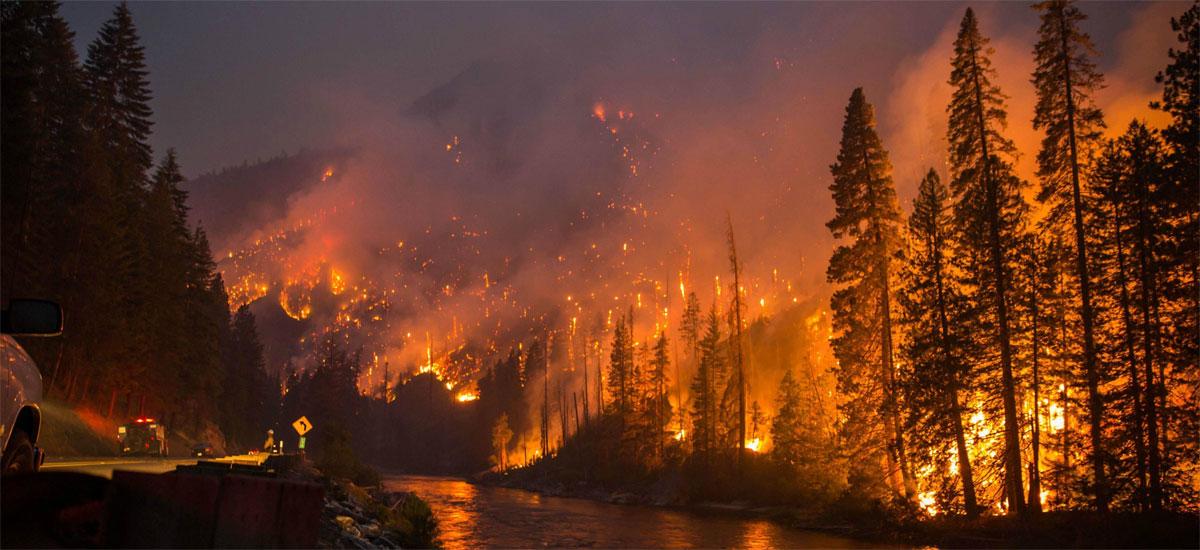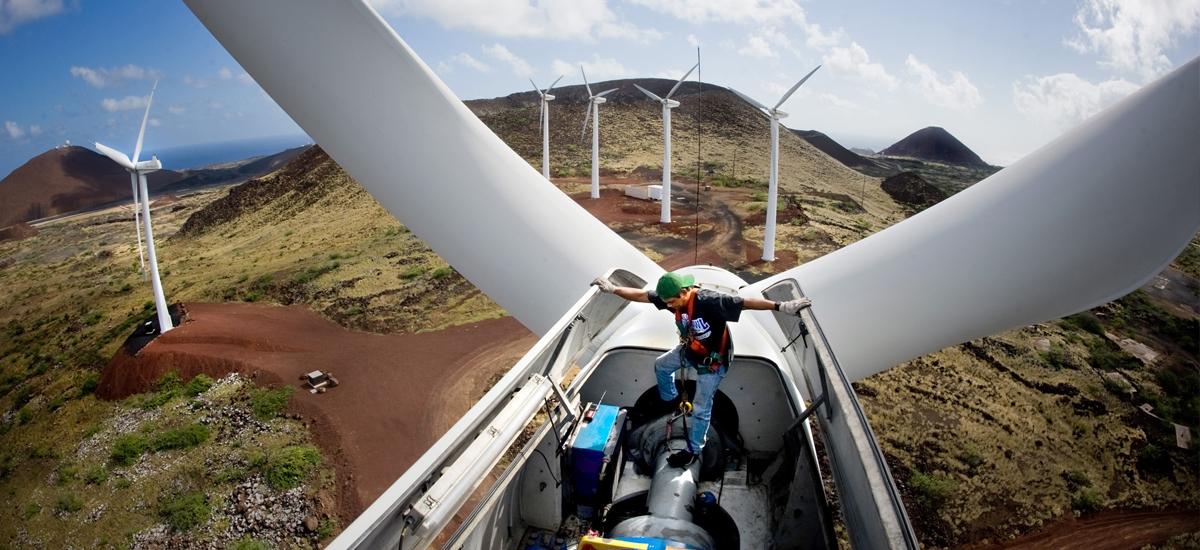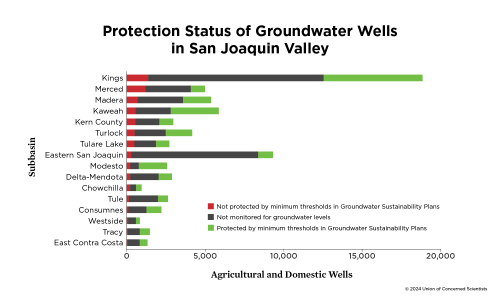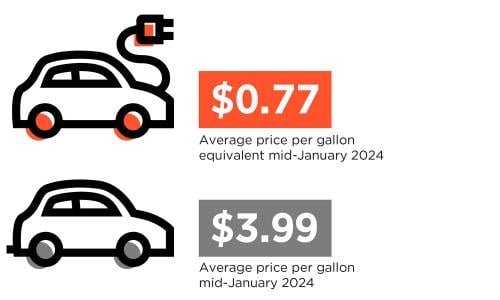The western United States is home to some of the nation’s most beautiful land. It’s also home to record-breaking amounts of renewable energy, as well as some of our most progressive climate policies—including carbon pricing and smart transportation choices.
And yet, across the West, signs of our rapidly changing climate become clearer each year. Records show higher temperatures, lower snowpack, drier forests, and rising sea levels. What are the impacts of global warming in the Western United States—and what can we do about them?

More severe droughts and reduced winter snowpack
As temperatures warm, the prevalence and duration of drought is expected to increase. California experienced its worst drought in recorded history between 2011 and 2016, and climate models unanimously project increased drought in the southwest, including a growing risk of “mega-droughts” that last more than two decades.
Rising temperatures are also leading to reduced mountain snowpack and earlier snowmelt in the West. These trends can exacerbate water scarcity by disrupting the timing and availability of water supplies. Reduced water availability forces greater tradeoffs between competing water use, including agriculture, ecosystems, and urban areas.
These impacts are part of a wider trend of more extreme weather (for example: California had the second wettest year on record in 2016-2017), for which we will need to plan and adapt.

Increased pressure on groundwater supplies
Increasingly, dry conditions will increase the pressure on groundwater supplies as more is pumped to meet demand even as less precipitation falls to replenish it. Groundwater supplies are like a bank account – when inputs match outputs, groundwater levels remain stable. Groundwater levels decline when more groundwater is pumped out than is replenished. Groundwater levels have been declining for decades in many places in the Western United States, such as California’s San Joaquin Valley and the Ogallala Aquifer in the High Plains region.

Longer and more damaging wildfire seasons
As temperatures rise in the Western United States, wildfires are increasing, wildfire season is getting longer, and costs are soaring. Higher spring and summer temperatures and earlier spring snow-melt result in forests that are hotter and drier for longer periods of time, priming conditions for wildfires to ignite and spread.
In fact, in California, all of the top five largest fires since 1932 have happened since 2000. Other states have also experienced unusually large and destructive fires.

Widespread impacts in the Pacific Northwest
The Pacific Northwest has warmed at least 1.3°F since 1895 and the impacts of this warming on the sensitive ecosystems of the region are already apparent to many residents. Shellfish hatcheries are failing because of an acidifying ocean, record-breaking wildfires are destroying forests and communities, and declining snowpack and earlier snowmelt in the mountains are jeopardizing freshwater species like salmon and trout.

Extensive forest death in the Rocky Mountains
Tens of millions of trees have died in the Rocky Mountains over the past 15 years, over an area as large as Colorado, victims of a climate-driven triple assault of tree-killing insects, wildfires, and stress from heat and drought. A record 129 million trees in California have faced a similar fate.
In fact, iconic tree species, including piñon pine, aspen, and whitebark pine, may face staggering losses across much of their current range, if heat-trapping emissions continue to rise. Severe droughts may become commonplace within a few decades, causing widespread tree mortality and major changes in the character of Western landscapes.

Costly and growing health impacts
Hotter temperatures also pose threats directly to human health, including more heat waves, worsening air and water quality, and increases in infectious diseases. For example, global warming is increasing the frequency and duration of heat waves in the West. Extreme heat also brings greater risk of death from dehydration, heat stroke, heart attack, and other heat-related illnesses, particularly for less affluent neighborhoods that may lack shade trees and access to air conditioning.
In addition, climate change will increase ozone pollution, wildfires, and allergens, which exacerbate lung diseases such as asthma and can cause breathing difficulties even in healthy individuals.

Coastal impacts
As carbon emissions pour into the atmosphere, warming oceans and melting land ice (glaciers, ice caps, and ice sheets) are both leading to increased sea levels. The risks of rising seas include tidal flooding, shoreline erosion, saltwater intrusion, larger storm surges, and permanent inundation. Ocean acidification also threatens significant marine species such as oysters and Pacific salmon.

Global warming solutions in the West
California is leading the nation in developing a comprehensive set of solutions to reduce global warming pollution in the state. The foundation for the state’s pollution-fighting activities is a 2006 law, the California Global Warming Solutions Act (AB 32), which called for reducing the state’s global warming emissions to 1990 levels by 2020. This law has catalyzed significant cuts in global warming pollution, while the California economy has grown to sixth largest in the world.
In 2016, the state adopted new targets (SB 32) to reduce emissions 40 percent below 1990 levels by 2030.
To help meet that goal, California is implementing numerous measures, including standards for renewable energy, a policy to scale up the use of clean fuels, requirements and incentives to increase the use of electric vehicles, and a flexible market-based cap on carbon emissions that creates economic incentives for major carbon polluters to cut their emissions. Furthermore, UCS analysis has found that California’s climate policies are saving consumers money.
California must continue to lead the way in addressing the risks of a warming climate. In 2015, UCS helped California pass a law (SB 350) that requires half of California’s electricity to come from renewable sources by 2030. We’re now focused on implementing the mandates set out under SB 32, as well as implementing the state’s cap-and-trade and air pollution laws. We’re also advancing climate-smart infrastructure that can withstand the impacts of climate change and keep our communities safe and resilient.
Crucially, we’re also working with partners to ensure equity and justice underline all our efforts to curb carbon pollution.
The West Coast—including Oregon and Washington—is fast-becoming a testing ground for innovative, effective climate policy. Considering the range and severity of climate impacts, it’s a leadership role desperately called for by the rest of the nation—and by the world.








